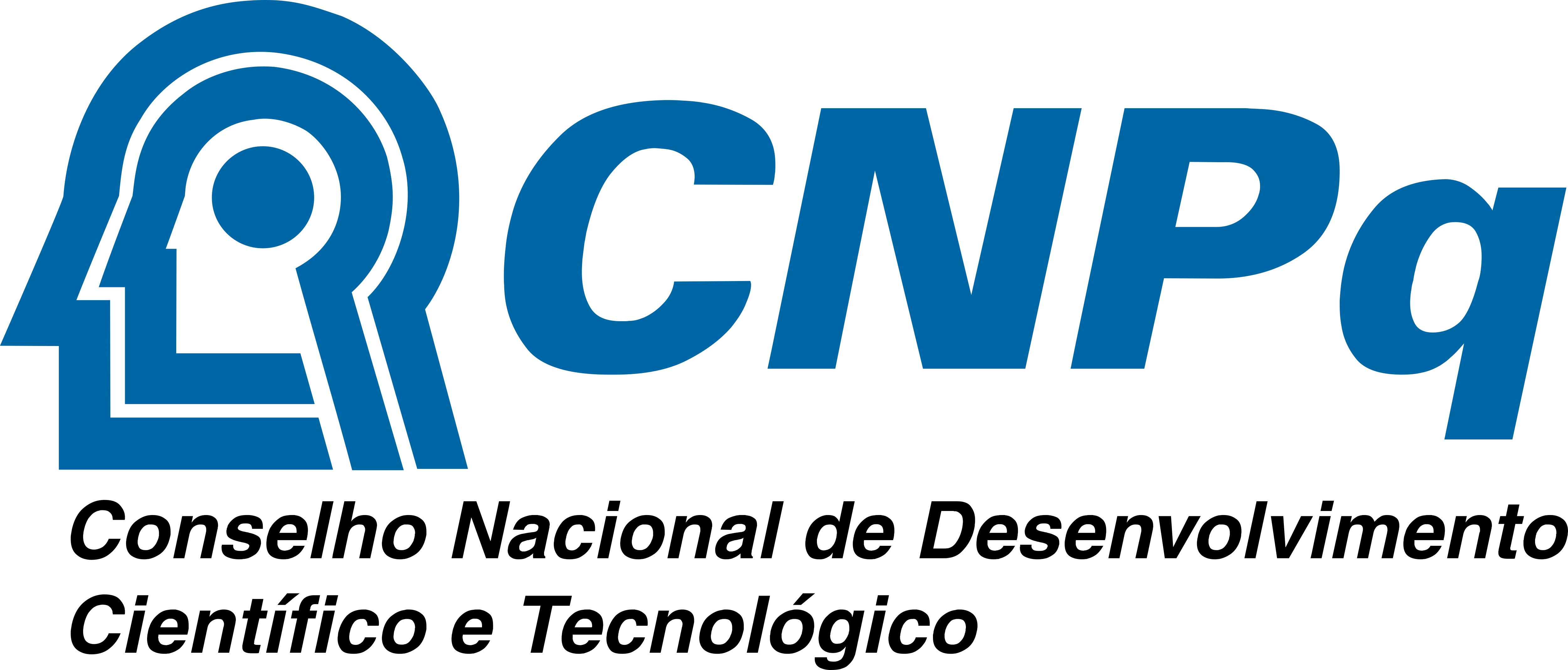PARE A AULA E FAÇA EXERCÍCIOS! PAUSAS FISICAMENTE ATIVAS MELHORAM O DESEMPENHO EM LEITURA E MATEMÁTICA DE CRIANÇAS ESCOLARES
Palavras-chave:
Educação Matemática, Atividade Física, CogniçãoResumo
A Atividade Física (AF) tem efeitos sobre as Funções Executivas (FE), as quais, por sua vez, foram associadas à conquista tanto na leitura quanto na matemática. Esse trabalho teve como objetivo analisar a literatura de investigações sobre os efeitos de intervenções em aulas com pausas fisicamente ativas no desempenho em leitura e matemática em escolares. Foram selecionadas pesquisas em bancos de dados eletrônicos, com critérios de inclusão e exclusão delineados. Realizou-se processo de identificação, triagem, elegibilidade dos artigos, resultando na inclusão de sete estudos. Em geral, a literatura sugere que há efeitos positivos de aulas com pausas fisicamente ativas na leitura e de maneira mais eficaz no desempenho matemático. Além disso, as aulas fisicamente ativas não comprometem o tempo das aulas acadêmicas e ainda contribuem para a quantidade de AF de moderada a vigorosa recomendadas diariamente para a saúde das crianças. Essa relação parece ser mediada pela melhoria da FE que suporta a aprendizagem. Implicações para a área de Educação Matemática são discutidas.
Downloads
Referências
ANDERSSON, U. Working memory as a predictor of written arithmetical skills in children: the importance of central executive functions. Br. J. Educ. Psychol. 78 (Pt 2):181–203, 2008. DOI:10.1348/000709907X209854
ARONEN, E. T. et al. Working memory. Psychiatric symptom sand academic performance at school. Neurobiol Learn Mem. 83: 33-42, 2005. DOI: 10.1016/j.nlm.2004.06.010
BADDELEY, A. Working memory: an overview. In. Pickering, S.J. (Org.) Working memory and education. Amsterdam: Elsevier Press., 2006. DOI: oi.org/10.1016/B978-012554465-8/50003-X
BASTOS, J. A. Matemática: distúrbios específicos e dificuldades. In: Transtornos de aprendizagem: abordagem neurobiológica e multidisciplinar. Org: ROTTA, Newra Tellechea; OHLWEILER, Lygia; RIESGO, Rudimar dos Santos. 2ª ed. Porto Alegre: Artmed., 2016.
BECK, M. M. et al. Motor-enriched learning activities can improve mathematical performance in pre-adolescent children. Frontiers in Human Neuroscience, v. 10, n. Dez., p. 1–14, 2016. DOI: 10.3389/fnhum.2016.00645
BLAIR, C.; RAZZA, R. P. Relating effortful control, executive function, and false belief understanding to emerging math and literacy ability in kindergarten. Child Dev. 78(2): 647-63, 2007. DOI: 10.1111/j.1467-8624.2007.01019.x
BRASIL. Ministério da Saúde. Secretaria de Atenção Primária à Saúde. Departamento de Promoção da Saúde. Guia de Atividade Física para a População Brasileira [recurso eletrônico] /Ministério da Saúde, Secretaria de Atenção Primária à Saúde, Departamento de Promoção da Saúde. – Brasília: Ministério da Saúde, 2021. 54 p.: il. Disponível em: http://bvsms.saude.gov.br/bvs/publicacoes/guia_atividade_fisica_populacao_brasileira.pdf. Acesso em: 20 mar 2023.
BULL, R.; SCERIF, G. Executive functioning as a predictor of children's mathematics ability: inhibition, switching, and working memory. Dev Neuropsychol. 19(3): 273–293, 2001. DOI:10.1207/S15326942DN1903_3
California Department of Education (DCE). California Fitness Test: Report to Governor and Legislature. Sacramento, California. Standards and Evaluation Division of the Department of Education, 2001. Disponível em: https://www.cde.ca.gov/ta/tg/pf/pftprioryrs.asp. Acesso em: 20 dez 2023.
CAMARGO, E. M.; AÑEZ, C. R. R. Diretrizes da OMS para atividade física e comportamento sedentário: num piscar de olhos [WHO guidelines on physical activity and sedentary behavior: at a glance], 2020. ISBN 978-65-00-15021-6.
CAPOVILLA, A. G. S.; ASSEF, E. C. S.; COZZA, H. F. P. Avaliação neuropsicológica das funções executivas e relação com desatenção e hiperatividade. Aval psicol, 6(6), 51-60, 2007. Disponível em: http://pepsic.bvsalud.org/scielo.php?script=sci_arttext&pid=S1677-04712007000100007. Acesso em: 20 dez 2023.
CENTEIO, E. E. et al. Relationship between academic achievement and healthy school transformations in urban elementary schools in the United States. Physical Education and Sport Pedagogy, v. 23, n. 4, p. 402–417, 2018. DOI: 10.1080/17408989.2018.1441395
COLCOMBE, S. J. et al. Cardiovascular fitness, cortical plasticity and aging. Proc. Natl Acad. Sci. EUA 101, 3316–3321, 2004. DOI: 10.1073/pnas.0400266101
COLCOMBE, S. J. et al. Aerobic exercise training increases brain volume in aging humans. J. Gerontol. A Biol. Sci. Med. Sci. 61, 1166–1170, 2006. DOI: 10.1093/gerona/61.11.1166
COSTA, A. P.; MONTEIRO, A. F. AFETIVIDADE NA EDUCAÇÃO MATEMÁTICA: UMA ANÁLISE DAS PRODUÇÕES CIENTÍFICAS. In: Congresso Nacional de Educação, n. II, 2015, Campina Grande (RS). II CONEDU. Campina Grande: Realize. p. 1-11. Disponível em: https://editorarealize.com.br/artigo/visualizar/15389. Acesso em: 20 dez 2023.
DIAMOND, A.; BARNETT, W. S.; THOMAS. J.; MUNRO, S. Preschool program improves cognitive control. Science. 318 (5855):1387-8, 2007. DOI: 10.1126/science.1151148
EGGER, F. et al. Boost your brain, while having a break! The effects of long-term cognitively engaging physical activity breaks on children’s executive functions and academic achievement. PLoS ONE, v. 14, n. 3, p. 1–20, 2019. Doi: 10.1371/journal.pone.0212482
ERWIN, H.; FEDEWA, A.; AHN, S. Student academic performance outcomes of a classroom physical activity intervention: A pilot study. International Electronic Journal of Elementary Education, v. 5, n. 2, p. 109–124, 2013. Disponível em: https://www.iejee.com/index.php/IEJEE/article/view/191. Acesso em: 20 dez 2023.
ETNIER, J. L.; CHANG, Y. K. The effect of physical activity on executive function: a brief commentary on definitions, measurement issues, and the current state of the literature. J. Sport Exerc Psychol. 31(4):469-83, 2009. DOI: 10.1123/jsep.31.4.469
FEDEWA, A. L.; AHN, S. The effects of physical activity and physical fitness on children’s cognitive outcomes: A meta-analysis. Research Quarterly for Exercise and Sport, 82(3), 521–535. PMid:21957711, 2011. DOI: 10.1080/02701367.2011.10599785
FEDEWA, A. L. et al. A randomized controlled design investigating the effects of classroom-based physical activity on children’s fluid intelligence and achievement. School Psychology International, v. 36, n. 2, p. 135–153, 2015. DOI: 10.1177/0143034314565424
FEDEWA, A. L. et al. Academic-Based and Aerobic-Only Movement Breaks: Are There Differential Effects on Physical Activity and Achievement? Research Quarterly for Exercise and Sport, v. 89, n. 2, p. 153–163, 2018. DOI: 10.1080/02701367.2018.1431602
FILHO, C. A. A. M.; ALVES, C. R. R.; SEPÚLVEDA, C. A.; COSTA, A. S.; JUNIOR, A. H. L. INFLUÊNCIA DO EXERCÍCIO FÍSICO NA COGNIÇÃO: UMA ATUALIZAÇÃO SOBRE MECANISMOS FISIOLÓGICOS. Rev. Bras. Med. Esporte – Vol. 20, Nº. 3 – Mai/Jun. 2014. Disponível em: http://www.scielo.br/pdf/rbme/v20n3/1517-8692-rbme-20-03-00237.pdf. Acesso em: 10 ago 2023.
GAPIN, J.; ETNIER, J. L. The Relationship Between Physical Activity and Executive Function Performance in Children With Attention-Deficit Hyperactivity Disorder. J. Sport Exercise Psy. 32(6): 753-63, 2010. DOI:10.1123/jsep.32.6.753
GAZZANIGA, M. S.; IVRY, R. B.; MANGUN, G. R. Neurociência cognitiva: a biologia da mente. Tradução: Angelica Rosat Consiglio et al. 2. ed. Porto Alegre: Artmed., 2006.
HAAPALA, E. A. et al. Physical activity and sedentary time in relation to academica chievement in children. J. Sci. Med. Sport. 583-589, 2017. DOI: 10.1016/j.jsams.2016.11.003
HILLMAN, C. H.; ERICKSON, K. I.; KRAMER, A. F. Be smart, exercise your heart: exercise effects on brain and cognition. Nature Reviews Neuroscience. 9(1):58-65, 2008. Disponível em: https://doi.org/10.1371/journal.pone.0099222. Acesso em: 20 nov. 2023.
INEP. Relatório Brasil no PISA 2018: versão preliminar. p. 154, 2019. DOI: 10.1017/CBO9781107415324.004. Disponível em: http://download.inep.gov.br/acoes_internacionais/pisa/documentos/2019/relatorio_PISA_2018_preliminar.pdf. Acesso em: 20 nov. 2023.
JANSSEN, I.; LEBLANC, A. G. Systematic review of the health benefits of physical activity and fitness in school-aged children and youth. International Journal of Behavioral Nutrition and Physical Activity, 7, 40–56, 2010. DOI: 10.1186/1479-5868-7-40
KENNEDY, J.; LYONS, T.; QUINN, F. The continuing decline os science and mathematics enrolments in Australian high schools. Teaching Science, v. 60, n. 2, p. 34–46, 2014. Disponível em: https://search.informit.org/doi/abs/10.3316/aeipt.203841. Acesso em: 20 dez 2023.
KRAVCHYCHYN, A. C. P. et al. Comparação entre os métodos direto e indireto de determinação do VO2máx de praticantes de corrida. Revista Brasileira de Medicina do Esporte, v. 21, n. 1, p. 17–21, 2015. DOI: 10.1590/1517-86922015210101412
LAMBOURNE, K.; TOMPOROWSKI, P. The effect of exercise-induced arousal on cognitive task performance: a meta-regression analysis. Brain Res. 23; 1341: 12-24, 2010. DOI: 10.1016/j.brainres.2010.03.091
LEE, K.; BULL, R. Developmental changes in working memory, updating, and math achievement. J. Educ. Psychol., 108(6), 869-882, 2016. DOI: 108869 10.1037/edu0000090
LEON, C. B. R. et al. Funções executivas e desempenho escolar em crianças de 6 a 9 anos de idade. Rev. psicopedag., São Paulo, v. 30, n. 92, p. 113-120, 2013. Disponível em: <http://pepsic.bvsalud.org/scielo.php?script=sci_arttext&pid=S0103-84862013000200005&lng=pt&nrm=iso>. Acesso em: 20 dez 2023.
LI et al. Acute aerobic exercise increases cortical activity during working memory: A functional MRI study in female colleg estudents. PLoSOne, 9 (6). Article e99222, 2014. Disponivel em: https://doi.org/10.1371/journal.pone.0099222. Acesso em: 20 dez 2023.
MALLOY-DINIZ, L. F.; SEDO, M.; FUENTES, D.; LEITE, W. B. Neuropsicologia das funções executivas. In: FUENTES, D.; MALLOY-DINIZ, L. F. C.; CAMARGO, H. P.; COSENZA, R. M. (Eds.), Neuropsicologia: teoria e prática. Porto Alegre: Artmed., 2008.
MARKS, B. L. et al. Role of aerobic fitness and aging in the integrity of brain white matter. Ann. NY Acad. Sci. 1097, 171–174, 2007. DOI: 10.1196/annals.1379.022
MELTZER, L. Promoting executive function in the classroom. New York: Guilford Press. 2010.
MIYAKE, A.; FRIEDMAN, N. P.; EMERSON, M. J.; WITZKI, A. H.; HOWERTER. A.; WAGER, T. D. The unityand diversity of executive function sand their contributions to complex "frontal lobe" tasks: a latent variable analysis. Cogn. Psychol. 41(1): 49-100, 2000. DOI: 10.1006/cogp.1999.0734.
MCMORRIS, T.; SPROULE, J.; TURNER, A.; HALE, B. J. Acute, intermediate intensity exercise, and speed and accuracy in working memory tasks: a meta-analytical comparison of effects. Physiol. Behav. 1; 102(3-4): 421-8, 2011. DOI:10.1016/j.physbeh.2010.12.007
MULLENDER-WIJNSMA, M. J. et al. Improving Academic Performance of School-Age Children by Physical Activity in the Classroom: 1-Year Program Evaluation. Journal of School Health, v. 85, n. 6, p. 365–371, 2015. DOI: 10.1111/josh.12259
MULLENDER-WIJNSMA, M. J. et al. Physically active math and language lessons improve academic achievement: A cluster randomized controlled trial. Pediatrics, v. 137, n. 3. 2016. DOI: 10.1542/peds.2015-2743
OCDE, PISA 2022 Results (Volume I): The State of Learning and Equity in Education, PISA, OECD Publishing, Paris, 2023. Doi: 10.1787/53f23881-en
PAGE, M. J. et al. The PRISMA 2020 statement: an updated guideline for reporting systematic reviews, BMJ, 2021; 372: n71. DOI:10.1136/bmj.n71
PHAM, A.; HASSON, R. Verbal and visuospatial working memory as predictors of children’s reading ability. Archives of Clinical Neuropsychology, v. 29, n. 5, p. 467– 477, 2014. Disponível em: https://doi.org/10.1093/arclin/acu024. Acesso em: 20 dez 2023.
PLOWMAN, S. A.; SMITH, D. L. Fisiologia do exercício para saúde, aptidão e desempenho. Rio de Janeiro: Guanabara Koogan, 2009.
PONTIFEX, M. B.; MCGOWAN, A. L.; CHANDLER, M. C.; GWIZDALAA, K. L.; PARKS, A. C.; FENN, K.; KAMIJO, K. A primer on investigating the after effects of acute bouts of physical activity on cognition. J. Psychology of Sport and Exercise. n. 40, p. 1-22, 2019. Disponível em: https://doi.org/10.1016/j.psychsport.2018.08.015. Acesso em: 20 dez 2023.
SIBLEY, B. A.; ETNIER, J. L. The relationship between physical activity and cognition in children: A meta-analysis. Pediatric Exercise Science, n. 15, p. 243–256, 2003. DOI: 10.1515/ijsl.2000.143.183
STERBERG, R. J.; STERBERG, K. Psicologia Cognitiva: Revisão Técnica. Marcelo Fernandes. Tradução: Noveritis do Brasil. 2ª ed. São Paulo, SP: Cencage Learning. 2016.
TITZ, C.; KARBACH, J. Working memory and executive functions: effects of training on academic achievement. Springer, p. 852–868, 2014. DOI: 10.1007/s00426-013-0537-1
TRUDEAU, F.; SHEPHARD, R. J. Relationships of physical activity to brain health and the academic performance of schoolchildren. American Journal of Lifestyle Medicine, n. 4, p. 138-150, 2010. DOI: 10.1186/1479-5868-5-10
TUOHILAMPI, L.; HANNULA, M. S.; LAINE, A.; METSÄMUURONEN, J. Examining Mathematics-Related Affect and Its Development During Comprehensive School Years in Finland. In: NICOL, C.; OESTERLE, S.; LILJEDAHL, P.; ALLAN, D. (Eds.): Proceedings of the Joint Meeting of PME 38 and PME-NA 36 (Vol. 5), pp. 281-288. Vancouver, Canada: PME, 2014. Disponível em: https://files.eric.ed.gov/fulltext/ED599983.pdf. Acesso em: 20 dez 2023.
VITARO, F.; BRENDGEN, M.; LAROSE, S.; TREMBALY, R. E. Kindergarten disruptive behaviors, protective factors, and educational achievement by early adulthood. J. Educ Psychol. 97(4): 617-29, 2005. DOI: 10.1037/0022-0663.97.4.617
ZHANG, J.; CHEUNG, S. K.; WU, C.; MENG, Y. Cognitive and Affective Correlates of Chinese Children’s Mathematical Word Problem Solving. Frontiers in Psychology, 9, 2018. Doi:10.3389/fpsyg.2018.02357.
ZIMMERMANN, N. et al. Funções executivas e linguagem na infância: conceitos e relações entre componentes cognitivos para a interpretação neuropsicológica e neuropsicolinguística. In: Avaliação de linguagem e funções executivas em crianças. São Paulo: Memnon, 2016.
Downloads
Publicado
Como Citar
Edição
Seção
Licença
Copyright (c) 2024 Mizael Carvalho de Souza, Natáli Valim Oliver Bento-Torres, João Bento-Torres, Luisa Matos da Silva

Este trabalho está licenciado sob uma licença Creative Commons Attribution 4.0 International License. Declaro que o trabalho apresentado é original, não tendo sido submetido à publicação em qualquer outro periódico nacional ou internacional, quer seja em parte ou em sua totalidade. Assim, concordo que os direitos autorais a ele referentes se tornem propriedade exclusiva da Editora da Revista Exitus, sendo vedada qualquer reprodução total ou parcial, em qualquer outra parte ou meio de divulgação impresso ou eletrônico, sem ser citada a fonte. Declaro, ainda, estar ciente de que a não observância deste compromisso submeterá o infrator a sanções e penas previstas na Lei de Proteção de Direitos Autorais (Nº 9.610, de 19/02/1998).











